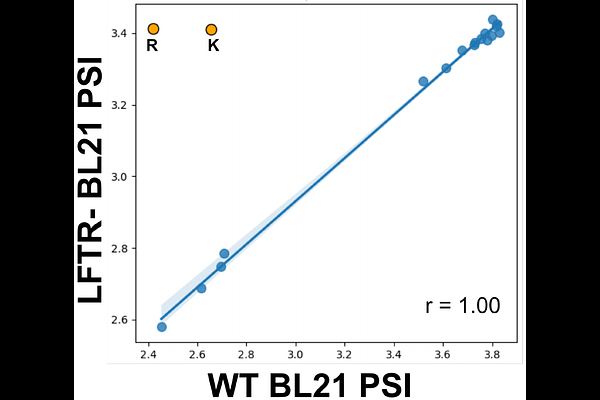Combinatorial mutagenesis of N-terminal sequences reveals unexpected and expanded stability determinants of the Escherichia coli N-degron pathway

Combinatorial mutagenesis of N-terminal sequences reveals unexpected and expanded stability determinants of the Escherichia coli N-degron pathway
Sen, S.; Corrado, N.; Tiso, A.; Kho, K. K.; Kunjapur, A. M.
AbstractAlthough it is known that penultimate N-terminal residues can influence protein stability by the N-degron pathway, there has not been a comprehensive effort to document nor predict these effects for natural and synthetic sequences in prokaryotes. Here, we present the deepest sequence coverage screen of the bacterial N-degron pathway using combinatorial site-saturation mutagenesis, fluorescence-activated cell sorting (FACS), and next-generation sequencing (NGS). Our results reveal new categories of exceptions and nuance to the N-degron pathway observed in bulk and context-specific analyses. For example, we find cases where penultimate residues can reinforce or shift the stability expected based only on the identity of position 1 (P1). We observe lowered stability for P2-P5 motifs rich in bulky residues and Gln as well as heightened stability for P2-P5 motifs rich in negatively charged residues, Gly, and Pro, particularly when these residues are at P2. We find that P1 Cys can be a component of an N-degron in a sequence-specific manner. Furthermore, we employ machine learning to predict protein stability, identifying several motifs with unexpected fates. Our work expands the sequence determinants of the bacterial N-degron pathway with unprecedented granularity, providing a set of sequence guidelines for proteomic investigation and protein engineering.